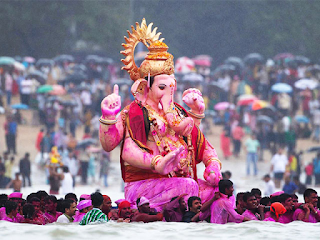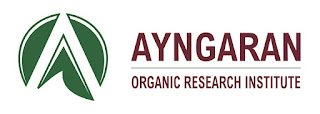Ayngaran Foundation start Bodhivanam
The purpose of this project is to establish meditation
centre , We wish to speak out to all peoples and people, who are ready to
support this project, who accept hindu teaching of mind development through
meditation. All these people are welcome to take part in this project.
We offer several possibilities, how to do that: donations
(Dana) that will be targeted towards development of meditation centre and
project; volunteer work during retreats and in construction; taking part in
retreats; using skills (ie. development of web page, architecture,
construction).
Also it will be possible to state exactly for which purpose
the donations should be used, for example construction of meditation hall,
teacher's . Making such offerings, according to tradition, is a wholesome deed
that will be very beneficial to the donator and bring good carmic results in
future.
From our side we will provide volunteers with help in
organising visas, accommodation and food. We do all our actions with maximum
transparency, so donators can see how these donations are being used. It is
possible to donate anonymously or personally - names of donators will be
recorded in special list and by end of project we will create a memorial plank
with donator's names on it.
our project details
The total project area is 50 ha and most of this territory
is covered by trees that were .
The project area is located between COIMBATORE city and UDUMELPET
. It has a rich diversity of protected plant and animal
species, a large number of bird species, which promotes regional activity of
plant and bird watchers.
TERITORIJAS PLĀNS
1. Recreation, Administration and Guest Centre.
Administrative and guest zone. Serves all necessary
functions, the main car park, guest houses, information and administration
centre, warehouses, etc.
2. Meditation Centre.
Administration. Reception. Office. Reception hall.
Meditation hall with accommodations for meditation teachers
and an interview room.
Kitchen and dining hall.
Accommodations. Two-storey buildings with individual rooms.
Library and school.
Medical building for the inhabitants of the centre. The
doctor's office. Pharmacy. Sauna.
Medical complex for guests. Various types of medical rooms.
Accommodations
Ecological regeneration is one of the current approaches in
spatial planning, which could partially be used in the future development of
this territory. But this does not include renewing former ecosystems because
many catchment area qualities and surrounding landscapes have changed without
the mechanical human involvement. The climate continues to change, that is why
the desire to restore nature to its previous state is not adequate. To reduce
the risk of error, ecological goals need to be set and new influences need to
be adapted that would be more easily accepted in the society. In the future, in
the light of climate change, there must be a transition from control and
monitoring to greater integration and adaptation. The abovementioned aspect
refers to the attitude towards the floodplains and regularly flooded areas, which
have been taken away during industrialization, e.g. by creating drainage ditch
systems. After analyzing the landscape development of this territory, it can be
concluded that chaotic spaces can sometimes be as valuable as the neat and
formal ones. The smart landscapes of tomorrow have to make us rejoice and
create a diversified space where there is a need to interact with natural
processes where we can interfere and change landscapes and see things grow. The
element of time is always essential in landscape architecture. We can consider
these places as a symbiotic relationship between the biologic complexity of the
landscape and the man-made infrastructure.
When constructing the meditation centre, regional
construction materials and methods are planned to be used together with modern
and innovative technologies. Wood is the main element, which makes the
complex’s architectural appearance correspond with its context.By using
innovative engineering technologies, it is projected to reduce the use of resources
for maintaining the centre, thus reducing the environmental impact of the
complex.
The project design and conceptual solution aims to be
sensitively inclusive with respect to its context, react to it and offer
appropriate creative solutions, thus ensuring its moral sustainability
Meditation Park.
Wilderness Park. A nature area with meditation huts, hiking
trails and individual pergolas.
Wilderness area. For cultivating various plants.
Men's monastery. The main meditation hall. The main spatial
and functional area of the meditation centre is the meditation hall, which is
designed to accommodate ~300 meditators as well as the surrounding
infrastructure. The territory has meditation huts. A complex for meditation
teachers.
Women's monastery. Women's meditation hall. Meditation huts
located in a separate part of the territory.
The main mode of getting around in the park and the
meditation centre is by foot; however, as a result of the park’s large-scale
development, an internal transport system could be set up to connect several
parts of the meditation park. The meditators will mainly use the former fish
ponds that connect the meditation centre with the meditation park, as well as
the surrounding buildings.
The greatest value that the location of Meditation Centre in
Ayngaran Bodhi vanam has is the natural base, which separates the
field of meditation from its surrounding noise by becoming a part of the
boundless nature. Once, men were responsible for the fastest transformations by drainage systems and then by abandoning a
part of this territory. Now, it is being given back to nature by allowing it to
overgrow. After allowing the present processes to continue, bushes, osiers and
beech groves have returned. In spring, part of the territory is flooded and
remains wet throughout the year. Due to the wet ground, buildings that are
planned to be constructed in the fish pond territory of Rūja are designed to
have rod-shaped foundations, thus minimizing interference with the ground and
raising the building’s floor to the level of the protecting dike. The level is
different in various places
The overgrowth characteristics are important for the park
areas that are planned to have meditation huts. There the overgrowth provides a
positive sense of isolation and asceticism by creating a natural landscape and
trying to find a compromise between allowing it to overgrow and to partially
maintaining it, which would be recommended to allow various species to
regenerate.
Ecological regeneration is one of the current approaches in
spatial planning, which could partially be used in the future development of
this territory. But this does not include renewing former ecosystems because
many catchment area qualities and surrounding landscapes have changed without
the mechanical human involvement. The climate continues to change, that is why
the desire to restore nature to its previous state is not adequate. To reduce
the risk of error, ecological goals need to be set and new influences need to
be adapted that would be more easily accepted in the society. In the future, in
the light of climate change, there must be a transition from control and
monitoring to greater integration and adaptation. The abovementioned aspect
refers to the attitude towards the floodplains and regularly flooded areas,
which have been taken away during industrialization, e.g. by creating drainage
ditch systems. After analyzing the landscape development of this territory, it
can be concluded that chaotic spaces can sometimes be as valuable as the neat and
formal ones. The smart landscapes of tomorrow have to make us rejoice and
create a diversified space where there is a need to interact with natural
processes where we can interfere and change landscapes and see things grow. The
element of time is always essential in landscape architecture. We can consider
these places as a symbiotic relationship between the biologic complexity of the
landscape and the man-made infrastructure.
When constructing the meditation centre, regional
construction materials and methods are planned to be used together with modern
and innovative technologies. Wood is the main element, which makes the
complex’s architectural appearance correspond with its context.By using
innovative engineering technologies, it is projected to reduce the use of
resources for maintaining the centre, thus reducing the environmental impact of
the complex.
The project design and conceptual solution aims to be
sensitively inclusive with respect to its context, react to it and offer
appropriate creative solutions, thus ensuring its moral sustainability











Comments
Post a Comment